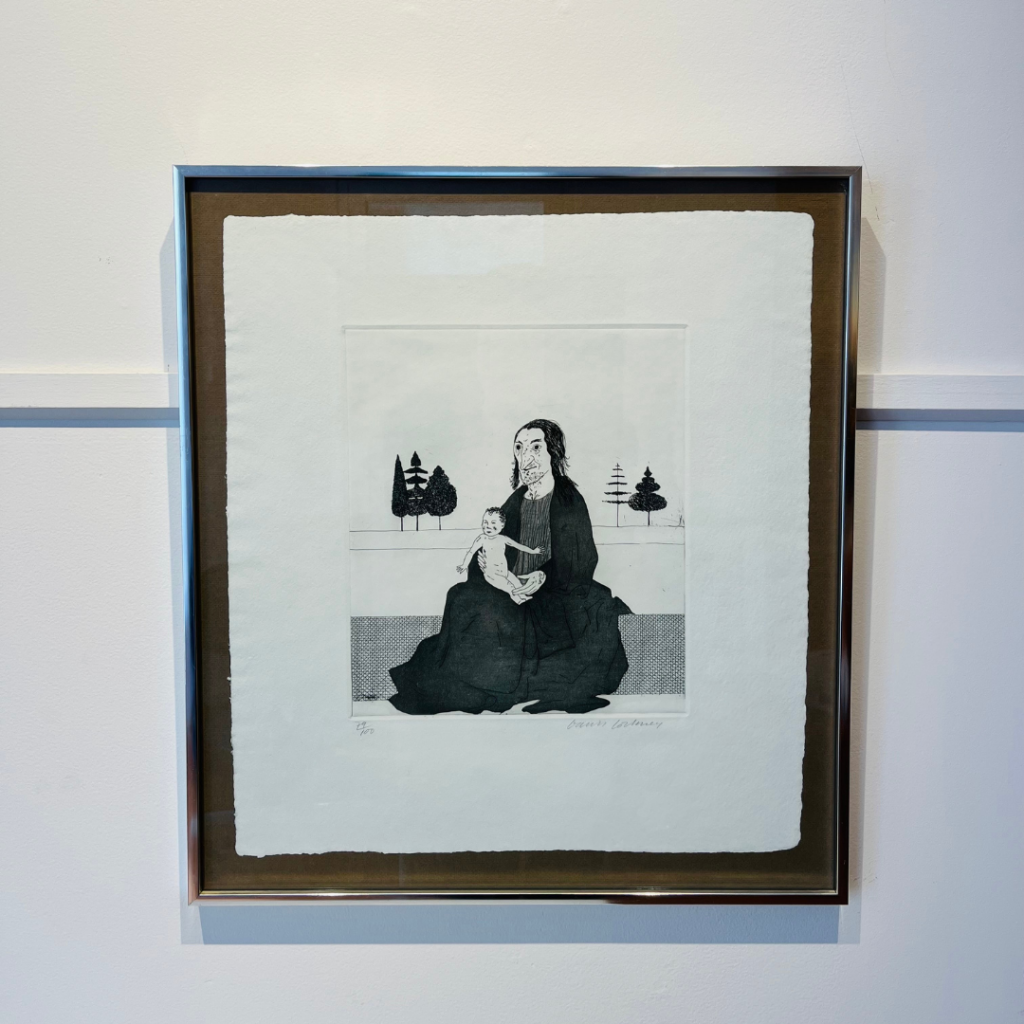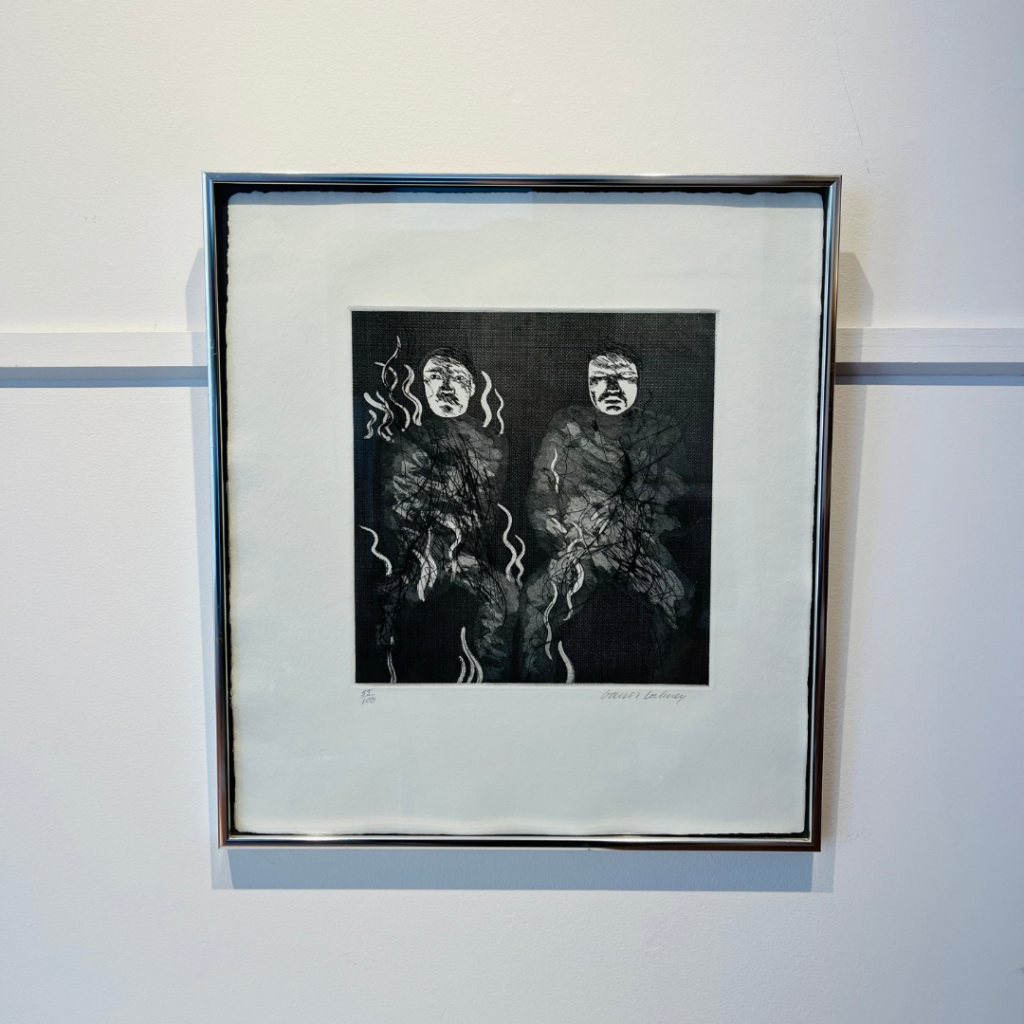The celebrated Pop artist David Hockney took the art world by storm in the 1960s and 1970s with his sun-drenched series of poolside modernist homes, capturing his newfound Californian lifestyle. He continues to stay relevant today by adapting to new technological advancements, from Polaroid cameras to iPads.
His works regularly break auction records, most recently with poolside drawings selling for over 2 million USD at Sotheby’s and Christie’s, respectively. During our Spring Live Auction of Important Canadian and International Art, his ink drawing Nehemiah Checking the Walls of Jerusalem not only drew an intense bidding war, but it sold for $102,000, well above its pre-sale estimate of $12,000 to $16,000.
In our upcoming online auction of Prints & Multiples, opening on August 29th, we will be offering two prints by the British artist. Initially published in 1970, Six Fairy Tales from the Brothers Grimm with Illustrations by David Hockney revisits the Grimm tales through whimsical black-and-white etchings, including The Little Hare, Rapunzel and Rumpelstiltskin.
“They’re fascinating, the little stories, told in a very very simple, direct, straightforward language and style; it was this simplicity that attracted me. They cover quite a strange range of experience, from the magical to the moral,” described Hockney in his 1976 autobiography.
His suite of thirty-nine etchings took nearly a year to complete, using a cross-hatching method to create variations in tone and texture. Hockney wanted to create a spontaneous effect by drawing the forms quickly to work out the style and the references to the period.
For Rapunzel, Hockney draws on art historical sources, with the face made deliberately ugly and the pose based on Hieronymus Bosch’s The Adoration of the Magi (ca. 1475), while the copse of trees in the background is reminiscent of Leonardo da Vinci’s The Annunciation (ca. 1472). He also drew inspiration from Vittore Carpaccio and Paolo Uccello for the costumes.
Hockney took liberties with the source material, however, referring to the old lady not as a witch but as an enchantress since “an enchantress is less wicked, really, and after all this woman in the story doesn’t keep the child; she’s quite kind about it.”
This second print comes from The Boy Who Left Home to Learn Fear, which Hockney believed to be “such a strange Gothic story; I’d no idea how to illustrate it. I only knew I wanted to do it.” Here he depicted two corpses on fire with moon-like faces. The figures stare blankly forward as their hazy bodies become engulfed by flames.
According to the German folktale, a young, naive boy slept beneath the gallows one night, where there were still seven hanged men, because he wanted to learn how to shudder. He built a fire to stay warm, and upon seeing the bodies sway in the wind, he realized they must be cold. He decided to cut the bodies down and placed them by the flames, but they did not stir when their clothing caught on fire. Annoyed at their reckless behaviour, the young, careless boy re-hung them on the gallows before travelling on.
Hockney’s series of etchings were ultimately proofed by Maurice Payne, printed by Piet Clement on Hodgkinson handmade paper and published by Petersburg Press in London and New York. A miniature book was published by Oxford University Press, selling over 150,000 copies.
With the fall 2023 auction season fast approaching, Cowley Abbott is seeking consignments of international art for our upcoming online and live sales.



